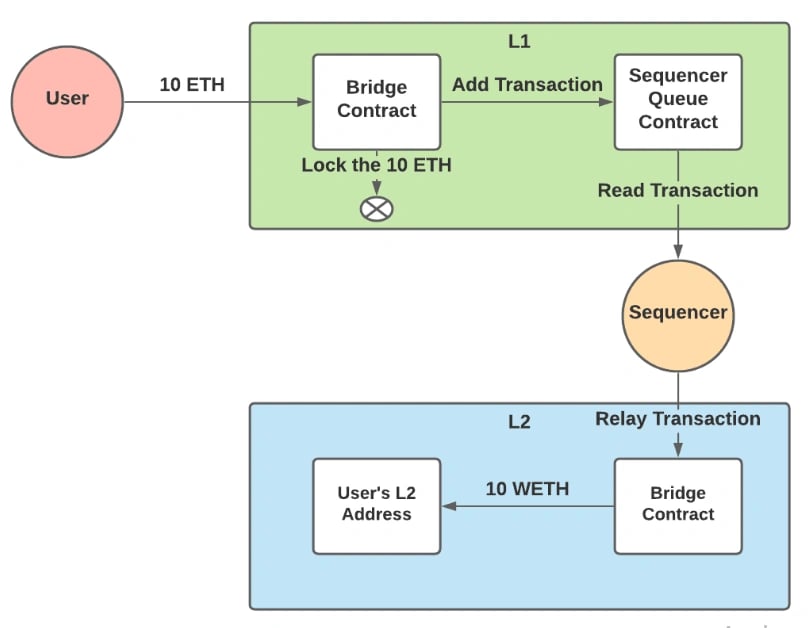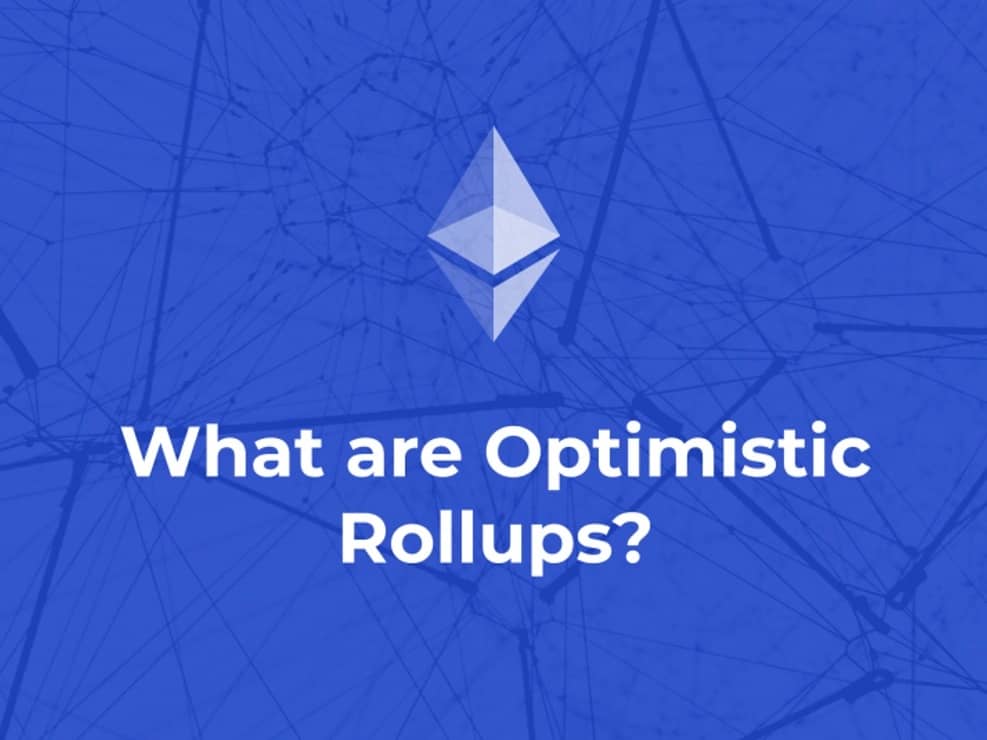Subscribe to wiki
Share wiki
Bookmark
Optimistic rollup
The Agent Tokenization Platform (ATP):Build autonomous agents with the Agent Development Kit (ADK)
Optimistic rollup
Optimistic rollup is a Layer 2 scaling protocol designed to enhance Ethereum’s throughput and latency by processing transactions outside of the network. It involves moving computation and data storage off-chain to reduce the load on the mainnet and increase its scalability. [1][2]
Optimistic rollup aggregates transactions into a single transaction, known as rollup blocks, to significantly enhance the throughput of the main blockchain. Its ability to process transactions off-chain and use a 'fraud-proof' mechanism to detect invalid transactions allows it to alleviate congestion on the main blockchain while offering seamless interoperability and efficient transaction processing. [3][4]
Overview
Optimistic rollup, a type of Layer 2 (L2) scaling solution, relies on off-chain computation to record transactions that occur within L2. It updates the state of the rollup on the main blockchain by publishing a Merkle root of the transactions that transpire within the rollup. Optimistic rollup is governed by three primary components: a smart contract, which interacts with both the L2 chain and Ethereum; a sequencer, responsible for collecting, ordering, and executing transactions on the L2 chain; and a set of validators, comprising a group of nodes that monitor the L2 chain and submit 'fraud proofs' to the smart contract if any invalid transactions are detected. Validators are accountable for checking the correctness of the Merkle roots before the system's state is updated. In cases of inconsistencies, a validator publishes a fraud-proof, which then reverts the state to its previously valid state. [5]
How Optimistic Rollup Works
The key feature of optimistic rollup is that it only verifies transactions if fraud-proof is submitted because it assumes all transactions are valid by default. In addition, it enables high scalability while maintaining security and decentralization. Optimistic rollup begins functioning when users sign transactions and submit them to the sequencer. The sequencer, in turn, verifies and adds these transactions to a queue. Subsequently, the sequencer batches thousands of queued transactions into a block, which contains Merkle roots of the L2 chain and the transactions and submits to the Ethereum network as a single transaction. Within the smart contract, the roots are stored, and the system's state is updated accordingly. [5]

The full block data is published off-chain by the sequencer, either on a decentralized storage network like IPFS or on a centralized server. Data verification is performed by validators to determine whether it matches the roots submitted on-chain when the data is accessed. If any discrepancies are discovered, validators can submit fraud proof to the smart contract. Subsequently, the contract will revert the invalid block and revoke the sequencer's bond. [5]
A user's fund withdrawal from the L2 chain to Ethereum must be initiated as an exit request on the L2 chain. The sequencer is involved in submitting the request in the form of a block to Ethereum and then the smart contract unlocks the funds and transfers them to the user's address, although there is a waiting period involved. In the case of an optimistic rollup, the waiting period is approximately one week before a withdrawal can be finalized. In contrast, ZK Rollups allow for immediate withdrawals. However, during this waiting period, anyone can challenge the exit with a fraud-proof claim if they believe it to be invalid. Additionally, the one-week waiting period can be bypassed when users utilize a liquidity provider (LP). An LP can pay a user on L1 in exchange for a fee when it assumes ownership of a pending L2 withdrawal. [2][5]
Elements
Optimistic rollup is a class of protocols sharing common features and design choices. The three major elements of this rollup are fraud-proof mechanisms, execution models, and data availability solutions. [5]
Fraud-Proof Mechanism
The fraud-proof mechanism in an optimistic rollup comes in two types: interactive and non-interactive. An interactive fraud-proof mechanism requires a sequencer and validators to verify the validity of a block, while a non-interactive fraud-proof mechanism utilizes cryptographic proofs to verify a block's validity without requiring direct interaction. The primary distinction between these two mechanisms lies in their characteristics: the former is more flexible and general but comes with higher costs and longer processing times, whereas the latter is more efficient and rapid but tends to be more restrictive and specialized. Notable examples of optimistic rollups employing interactive fraud-proof mechanisms include Optimism and Arbitrum. On the other hand, zkSync 2.0 and Boba Network employ the non-interactive fraud-proof mechanisms of the optimistic rollup. [5]
Execution Model
The classification of the execution model in optimistic rollups also comprises two types: Ethereum Virtual Machine (EVM)-compatible and EVM-equivalent rollups. The former employs the EVM as its base layer (Layer 1), enabling the rollups to execute any smart contract without requiring modifications. Conversely, the latter adopts a functionally equivalent virtual machine, allowing the rollups to accommodate most smart contracts with minor adjustments. Examples of EVM-compatible optimistic rollups include Optimism and Arbitrum, while EVM-equivalent rollups include zkSync 2.0 and Boba Network. [5]
Data Availability Solution
This category of optimistic rollup elements also comprises two types: decentralized data availability solutions and centralized data availability solutions. In a decentralized data availability solution, peer-to-peer networks or decentralized storage networks like IPFS are employed to store and distribute full-block data. In contrast, centralized data availability solutions rely on a single server or a trusted third party to store and provide full-block data. The significant distinction between these two data solutions lies in their security and censorship resistance. Decentralized solutions are more secure and resistant to censorship, albeit being more expensive and complex. On the other hand, centralized solutions are vulnerable and depend on trust, but they are more cost-effective and simpler. Optimism and Arbitrum exemplify rollups that utilize decentralized data solutions, while zkSync 2.0 and Boba Network opt for centralized data availability solutions. [5]
Benefits
Optimistic rollup offers numerous benefits, including higher throughput, lower gas fees, faster confirmation times, enhanced security and decentralization, as well as compatibility with existing smart contracts and tools. [5]
Higher Throughput
Optimistic rollup enhances transaction throughput by achieving greater transaction speeds and shorter confirmation times. This is accomplished by circumventing congestion and limitations at Layer 1 (L1), enabling transactions to be processed more swiftly and frequently on the L2 chain. [5]
Lower Gas Fees
In an optimistic rollup, a significant portion of computation and data storage is shifted off-chain, leading to reduced gas fees for transactions. Additionally, this approach economizes on gas costs and enhances efficiency by aggregating thousands of transactions into a single block, with minimal data submitted on-chain. [5]
Faster ConfirmationTimes
Confirmations on the L2 chain occur instantly, enhancing transaction latency within the rollup. [5]
Security and Decentralization
Security and decentralization in an optimistic rollup are derived from L1 by publishing transaction results on-chain and relying on fraud proofs to ensure correctness. [5]
Compatibility
Optimistic rollup is compatible with existing smart contracts and tools, thereby benefiting both developers and users. For instance, developers can utilize familiar libraries, frameworks, and standards such as ERC-20, EVM, and Solidity. Similarly, users can employ the same wallets, interfaces, and browsers, like MetaMask. [5]
Examples
The leading optimistic rollup blockchains based on Total Value Locked (TVL) include Arbitrum, Optimism, Metis Andromeda, and Boba Network. [7]
Arbitrum
Arbitrum is an optimistic rollup project specifically designed to enhance Ethereum's user costs and transaction speed by transferring computation and data storage off-chain. It operates as a Layer 2 solution, improving the capabilities of Ethereum smart contracts by increasing their speed and scalability while integrating additional privacy features. In addition, Arbitrum has higher throughput and lower fees as compared to Ethereum. [7][8][9]
The Arbitrum Virtual Machine (AVM) enables the use of EVM-compatible smart contracts, allowing users to access their preferred dApps at a fraction of the cost compared to Ethereum. Arbitrum has its own native token, known as ARB, primarily utilized for governance purposes. ARB holders have the authority to participate in voting on proposals that impact features, protocol enhancements, fund allocation, and the selection of a Security Council. [7][9]
Optimism
Optimism is a Layer 2 blockchain that leverages the security of the Ethereum mainnet to enhance the scalability of the Ethereum ecosystem through optimistic rollups. This approach ensures that transactions are recorded on Optimism in a trustless manner and are ultimately secured on the Ethereum network.[10]
Optimism focuses on simplicity in constructing its Ethereum Layer 2 solution, which involves utilizing established Ethereum code and infrastructure whenever feasible. Its goal is to maintain simplicity in its code by working directly with existing codebases. [10][12][13]
Metis Andromeda
Metis Andromeda was developed to meet the demand for permissionless and open collaboration, offering Ethereum users an EVM equivalent, lightning-fast, and user-friendly Layer 2 solution. Originally forked from Optimism, Metis provides support for multiple interconnected chains, with a main focus on supporting the easy creation of DACs (decentralized autonomous companies). It offers three essential products alongside its Layer 2 scaling technology: [11]
- An NFT bridge and storage solution
- A framework for DACs
- Polis, a middleware platform
Metis' NFT bridge facilitates the seamless transfer of NFTs between the Ethereum blockchain and Metis' Andromeda network. This allows users to create NFTs on Metis, potentially reducing minting fees, and then moving them to Ethereum. Conversely, users can mint NFTs on Ethereum and transfer them to Metis. The Metis crypto protocol also provides NFT storage by integrating with the InterPlanetary File System (IPFS), a decentralized file storage system. [13]
Boba Network
Boba Network is a multichain Layer 2 scaling solution designed to harness the power of rollup technology and enhance blockchain communication flexibility. It utilizes Optimistic Rollup technology to decrease gas fees, enhance transaction speed, and broaden the functionalities of smart contracts. The Boba network is fully compatible with EVM-based tools and has extended multichain support for Avalanche, BNB, Moonbeam, and Fantom, enabling rapid transactions and low fees.[14][15]
See something wrong?
The Agent Tokenization Platform (ATP):Build autonomous agents with the Agent Development Kit (ADK)
